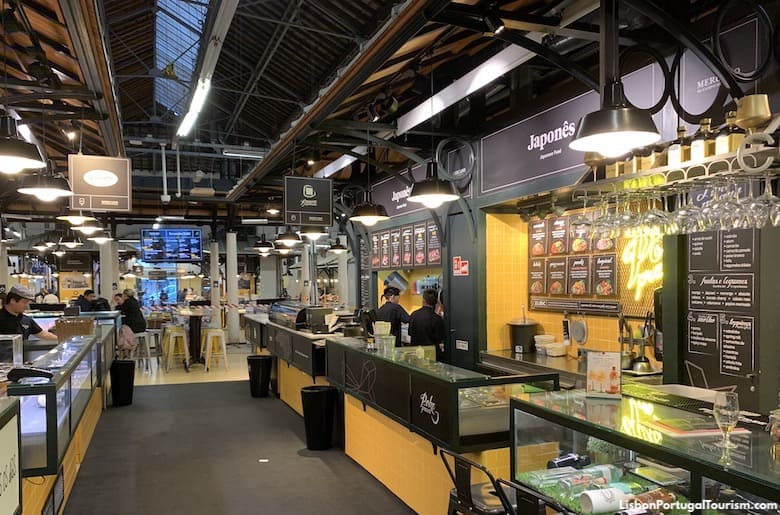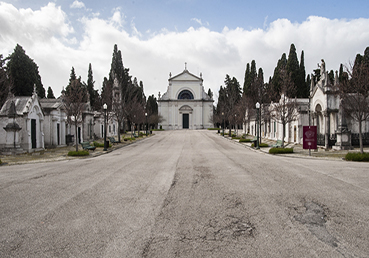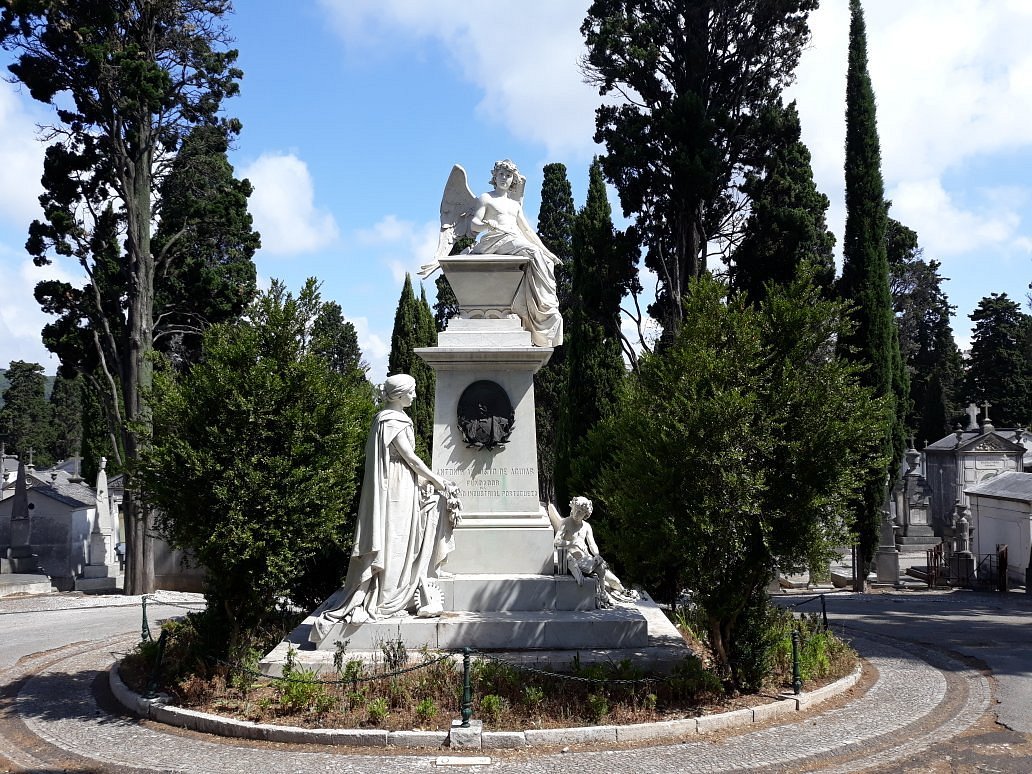Since, as Kit noted, many people walking on the Portugues will pass through Lisbon, I am posting here my walking tour of the main touristy areas, which I regularly share with friends going to Portugal. This can be walked non-stop in a little more than two hours, but with stops, it'll easily fill two or three days. Suggestions and additions welcome!
Laurie
I have spent a couple of years in Lisbon, and I love showing it off to my friends. I’m an avid walker and we’ve gotten a lot of visitors, and those two things combined to give me the idea of putting together a “best of Lisbon” walking tour. I have taken a number of groups on this route and everyone has always been very happy. It’s not a strenuous walk, though there are lots of hills in Lisbon. If you get tired going up a hill, you are never far from a café or square where you can sit and enjoy the views. The directions here are not exact and precise, so having a city map with you will help..
Start at the Rato metro stop. The Largo do Rato is an old square with some big old government buildings and a small row of storefronts, where several busy streets intersect. There are a few cafes right there and a restaurant in an old royal factory called the “Fabrica Real.” (I forget what they used to make here, but I think it may be silk). If you are an Amalia Rodrigues fan, you can visit her house before starting the walk. It’s on the Rua Sao Bento, not far from the metro stop. When we visited, we were led through the house by the woman who was her maid for 40 or more years and lived in the house with Amalia and her husband. The house is crammed full of all Amalia’s personal things, awards, clothes, etc. Admission is about 5-6E.
From Rato, walk up the Rua Escola Politecnica to the Praca do Principe Real, making sure to get the views of the river and the bridge on your right as you go up higher. Before you get to the square, you will come to the entrance to the Botanical Gardens on your left. http://www.jb.ul.pt/ It’s a huge oasis right next to the Museum of Natural History (where I’ve never been so I can’t tell you much about it).
Principe Real is a very nice square with rubber trees and other beautiful plants. There’s a nice café right in the square and usually there are groups of men playing cards, kids playing on the swings, it’s just a very nice atmosphere. Keep going straight, you’ll pass the Pastelaria Sao Roque on the right side. This pastry shop was in the New York Times’ “36 hours in Lisbon.” It’s a very pretty tiled café, kind of art nouveau-ish, but I don’t think the pastries are great. The one exception is the “sonhos” (dreams), kind of a fried dough concoction. As the street starts to descend, you come to the Miradouro (look-out) Sao Pedro de Alcantara on your left. This is a two tiered square that has been very nicely renovated – fountains, gardens, and terrific views over the city. The Port Wine Institute is right across the street, but it’s usually a little too early to drink port when I get there.
Stay on the same street (whose name changes from Escola Politecnica to Sao Pedro de Alcantara, and then to Misericordia). At the next little square on your left, you’ll see the Sao Roque Church. The wooden painted ceiling and mosaics inside, along with a number of very ornate small chapels, is one of Lisbon's "must see" churches if you like to visit churches. Across the square from the church, on the Rua da Misericordia, is the Adega Sao Roque, one of my favorite casual restaurants in Lisbon. The seafood cataplana and the grilled fish plate are delicious.
Right around the Adega Sao Roque, turn left off of Misericordia and weave around and you’ll come to the Convento do Carmo, the gothic church/cloister/monastery that was left in ruins after the 1755 earthquake. There’s an archeological museum, even has some pre-Colombian artifacts inside. Walk on the narrow sidewalk alongside the edge of the church and you will be on the top of the Sao Justa elevator. Walk up the spiral staircases, there’s a café on the top. Another set of spectacular views. Head back to Rua Misericordia, which will take you down into the Praça de Camoes and the Largo do Chiado with its two heavily visited cafes. Keep going straight down the Rua Garrett and the building facing you at the end is a shopping mall that has a FNAC (huge book and music store, think Best Buy marries Barnes and Noble). Turn left and go down the Rua do Carmo (past the glove store Ulisses, it’s about six feet across, has its original facade from the early 20th century and sells reasonably priced and very nice handmade gloves). http://www.luvariaulisses.com/pt/pagina/1/home/
The Rua do Carmo will take you straight into the Praça do Rossio with its fountains and statue of King Pedro IV (?). Keep walking straight with the praça on your right and turn the corner at the end of the Praça, where you will see the beautiful Rossio train station (recently cleaned so it’s quite a show stopper). Cross the street (having the train station at your back) and you will come out on the Largo de Sao Domingos (church there of the same name), but the attraction here is the “ginja” store that looks like it’s been there for at least a hundred years. It’s a little hole in the wall with a very old storefront and sells a cherry liquor for 1E a shot. There’s always a line of people, and they’re not all tourists. We usually get the option that gives you a few soaked cherries in the little glass and 1 glass usually satisfies four or more people, especially if it’s morning. But trying it is part of the fun.
If you go past the Sao Domingos church (church on your left), you’ll emerge in the Praça da Figueira, which adjoins the Rossio. The legendary Pastelaria Suiça in the praça has closed, but on a corner in between Figueira and Rossio, the Confeitaria Nacional is a traditional pastry shop with a good selection.
Now it’s time to walk down to the river, through the grid streets of the Baixa (low area) that were rebuilt after the earthquake. Rua Agusta is pedestrian only and quite popular. Lots of those “hip” clothing stores for young people – H&M, Zara, Mango, Stradavarius, etc. At the end of the Rua Agusta, you will walk through the arch and emerge in the Terreiro do Paço (also called Praca do Comercio), the square adjacent to the water. Boats now leave from here to cross the river. Modern trams leave from here that take you straight to Belem with its many sights. A pousada (Portuguese hotels similar to Spain’s paradores) has opened in the square, which has brought a spate of cafés and restaurants. Also recently opened is a small square right on the river with great views.
From the Terreiro do Paço, retrace your steps a few blocks on the Rua Agusta until you hit the Rua da Conceiçao and follow the trolley tracks to your right and up. You will soon come to the Cathedral. It’s a 12th century fortress-like building. There’s a nice café with good food (not a little Lisbon hole in the wall, more of a salad and sandwich café), called Pois, Café, which is located on the street that runs along the right side of the Cathedral (if you’re facing its main door). The yellow arrows start there. As you face the cathedral door, they are to the right and on the bottom of the wall. The way from Lisbon is extremely well marked.
The street that Pois, Café is on is called Cruces da Se, and it is a good entrance into the Alfama district. Just wander around a while, there are churches, restaurants, small shops, etc. When you’re done visiting the Alfama, you will need to climb up and find the Miradouro that’s at the Largo das Portas do Sol. Right next to it is the Miradouro de Santa Luzia. The views are great from both, cafes in both.
From Santa Luzia it’s a short but steep climb up to the castle Sao Jorge. You will see signs pointing you in the right direction. Once inside (5E), you can climb and walk the walls to your heart’s content. Incredible views in all directions. Frequently there are very good “street musicians” playing guitar or violin and it makes the place just magical.
But since no Lisbon visit would be complete without a ride on the tram, I suggest that after you’re done with the castle, walk back down to the miradouro Santa Luzia and catch the Tram 28 in the downhill direction. Get on one that says “Prazeres” (the other option will say Estrela and it will not take you far enough). Take the tram up and down through the Bairro Alto, Santa Catarina, past the Parliament, up past the Estrela basilica and gardens (a very nice stop in themselves), to the stop where Saraiva de Carvalho crosses Domingos Sequeira. (You can ask your driver to tell you when you hit Campo d’Ourique). Campo d’Ourique is a very nice 19th century tree-lined residential neighborhood, with very good restaurants (Tasquinha d’Adelaide, Os Passarinhos, and Stop do Bairro are a few of them) and lots of little shops, cafes, a nice square, etc.
I know this route leaves out a few important destinations – the Gulbenkian, Sao Vicente de Fora, the Tile Museum, Belem, etc., but I think it is a great way to get a good view of Lisbon without a lot of backtracking.
Laurie
I have spent a couple of years in Lisbon, and I love showing it off to my friends. I’m an avid walker and we’ve gotten a lot of visitors, and those two things combined to give me the idea of putting together a “best of Lisbon” walking tour. I have taken a number of groups on this route and everyone has always been very happy. It’s not a strenuous walk, though there are lots of hills in Lisbon. If you get tired going up a hill, you are never far from a café or square where you can sit and enjoy the views. The directions here are not exact and precise, so having a city map with you will help..
Start at the Rato metro stop. The Largo do Rato is an old square with some big old government buildings and a small row of storefronts, where several busy streets intersect. There are a few cafes right there and a restaurant in an old royal factory called the “Fabrica Real.” (I forget what they used to make here, but I think it may be silk). If you are an Amalia Rodrigues fan, you can visit her house before starting the walk. It’s on the Rua Sao Bento, not far from the metro stop. When we visited, we were led through the house by the woman who was her maid for 40 or more years and lived in the house with Amalia and her husband. The house is crammed full of all Amalia’s personal things, awards, clothes, etc. Admission is about 5-6E.
From Rato, walk up the Rua Escola Politecnica to the Praca do Principe Real, making sure to get the views of the river and the bridge on your right as you go up higher. Before you get to the square, you will come to the entrance to the Botanical Gardens on your left. http://www.jb.ul.pt/ It’s a huge oasis right next to the Museum of Natural History (where I’ve never been so I can’t tell you much about it).
Principe Real is a very nice square with rubber trees and other beautiful plants. There’s a nice café right in the square and usually there are groups of men playing cards, kids playing on the swings, it’s just a very nice atmosphere. Keep going straight, you’ll pass the Pastelaria Sao Roque on the right side. This pastry shop was in the New York Times’ “36 hours in Lisbon.” It’s a very pretty tiled café, kind of art nouveau-ish, but I don’t think the pastries are great. The one exception is the “sonhos” (dreams), kind of a fried dough concoction. As the street starts to descend, you come to the Miradouro (look-out) Sao Pedro de Alcantara on your left. This is a two tiered square that has been very nicely renovated – fountains, gardens, and terrific views over the city. The Port Wine Institute is right across the street, but it’s usually a little too early to drink port when I get there.
Stay on the same street (whose name changes from Escola Politecnica to Sao Pedro de Alcantara, and then to Misericordia). At the next little square on your left, you’ll see the Sao Roque Church. The wooden painted ceiling and mosaics inside, along with a number of very ornate small chapels, is one of Lisbon's "must see" churches if you like to visit churches. Across the square from the church, on the Rua da Misericordia, is the Adega Sao Roque, one of my favorite casual restaurants in Lisbon. The seafood cataplana and the grilled fish plate are delicious.
Right around the Adega Sao Roque, turn left off of Misericordia and weave around and you’ll come to the Convento do Carmo, the gothic church/cloister/monastery that was left in ruins after the 1755 earthquake. There’s an archeological museum, even has some pre-Colombian artifacts inside. Walk on the narrow sidewalk alongside the edge of the church and you will be on the top of the Sao Justa elevator. Walk up the spiral staircases, there’s a café on the top. Another set of spectacular views. Head back to Rua Misericordia, which will take you down into the Praça de Camoes and the Largo do Chiado with its two heavily visited cafes. Keep going straight down the Rua Garrett and the building facing you at the end is a shopping mall that has a FNAC (huge book and music store, think Best Buy marries Barnes and Noble). Turn left and go down the Rua do Carmo (past the glove store Ulisses, it’s about six feet across, has its original facade from the early 20th century and sells reasonably priced and very nice handmade gloves). http://www.luvariaulisses.com/pt/pagina/1/home/
The Rua do Carmo will take you straight into the Praça do Rossio with its fountains and statue of King Pedro IV (?). Keep walking straight with the praça on your right and turn the corner at the end of the Praça, where you will see the beautiful Rossio train station (recently cleaned so it’s quite a show stopper). Cross the street (having the train station at your back) and you will come out on the Largo de Sao Domingos (church there of the same name), but the attraction here is the “ginja” store that looks like it’s been there for at least a hundred years. It’s a little hole in the wall with a very old storefront and sells a cherry liquor for 1E a shot. There’s always a line of people, and they’re not all tourists. We usually get the option that gives you a few soaked cherries in the little glass and 1 glass usually satisfies four or more people, especially if it’s morning. But trying it is part of the fun.
If you go past the Sao Domingos church (church on your left), you’ll emerge in the Praça da Figueira, which adjoins the Rossio. The legendary Pastelaria Suiça in the praça has closed, but on a corner in between Figueira and Rossio, the Confeitaria Nacional is a traditional pastry shop with a good selection.
Now it’s time to walk down to the river, through the grid streets of the Baixa (low area) that were rebuilt after the earthquake. Rua Agusta is pedestrian only and quite popular. Lots of those “hip” clothing stores for young people – H&M, Zara, Mango, Stradavarius, etc. At the end of the Rua Agusta, you will walk through the arch and emerge in the Terreiro do Paço (also called Praca do Comercio), the square adjacent to the water. Boats now leave from here to cross the river. Modern trams leave from here that take you straight to Belem with its many sights. A pousada (Portuguese hotels similar to Spain’s paradores) has opened in the square, which has brought a spate of cafés and restaurants. Also recently opened is a small square right on the river with great views.
From the Terreiro do Paço, retrace your steps a few blocks on the Rua Agusta until you hit the Rua da Conceiçao and follow the trolley tracks to your right and up. You will soon come to the Cathedral. It’s a 12th century fortress-like building. There’s a nice café with good food (not a little Lisbon hole in the wall, more of a salad and sandwich café), called Pois, Café, which is located on the street that runs along the right side of the Cathedral (if you’re facing its main door). The yellow arrows start there. As you face the cathedral door, they are to the right and on the bottom of the wall. The way from Lisbon is extremely well marked.
The street that Pois, Café is on is called Cruces da Se, and it is a good entrance into the Alfama district. Just wander around a while, there are churches, restaurants, small shops, etc. When you’re done visiting the Alfama, you will need to climb up and find the Miradouro that’s at the Largo das Portas do Sol. Right next to it is the Miradouro de Santa Luzia. The views are great from both, cafes in both.
From Santa Luzia it’s a short but steep climb up to the castle Sao Jorge. You will see signs pointing you in the right direction. Once inside (5E), you can climb and walk the walls to your heart’s content. Incredible views in all directions. Frequently there are very good “street musicians” playing guitar or violin and it makes the place just magical.
But since no Lisbon visit would be complete without a ride on the tram, I suggest that after you’re done with the castle, walk back down to the miradouro Santa Luzia and catch the Tram 28 in the downhill direction. Get on one that says “Prazeres” (the other option will say Estrela and it will not take you far enough). Take the tram up and down through the Bairro Alto, Santa Catarina, past the Parliament, up past the Estrela basilica and gardens (a very nice stop in themselves), to the stop where Saraiva de Carvalho crosses Domingos Sequeira. (You can ask your driver to tell you when you hit Campo d’Ourique). Campo d’Ourique is a very nice 19th century tree-lined residential neighborhood, with very good restaurants (Tasquinha d’Adelaide, Os Passarinhos, and Stop do Bairro are a few of them) and lots of little shops, cafes, a nice square, etc.
I know this route leaves out a few important destinations – the Gulbenkian, Sao Vicente de Fora, the Tile Museum, Belem, etc., but I think it is a great way to get a good view of Lisbon without a lot of backtracking.
Last edited:






















